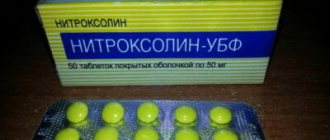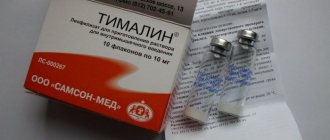Write a review
Reviews: 0
Manufacturers: Bayer Schering Pharma AG (Germany)
Active ingredients
- Ciprofloxacin
Disease class
- Not indicated. See instructions
Clinical and pharmacological group
- Not indicated. See instructions
Pharmacological action
- Broad spectrum antibacterial action
Pharmacological group
- Quinolones/fluoroquinolones
Oral tablets Ciprobay
Instructions for medical use of the drug
Description of pharmacological action
Ciprofloxacin is a synthetic broad-spectrum antibacterial drug from the group of fluoroquinolones. Ciprofloxacin in vitro has the highest activity against gram-negative bacteria, incl. against Pseudomonas aeruginosa, as well as against gram-positive bacteria such as staphylococci and streptococci. Anaerobic bacteria are generally less sensitive to ciprofloxacin. Ciprofloxacin acts both on microorganisms that are reproducing and those in the resting phase. The drug inhibits the enzyme DNA gyrase of bacteria, as a result of which DNA replication and the synthesis of cellular proteins of bacteria are disrupted. Resistance to ciprofloxacin develops slowly and gradually. When using ciprofloxacin, there were no cases of plasmid resistance, which often develops with the use of beta-lactam antibiotics, aminoglycosides and tetracyclines. Bacteria containing plasmids are also highly sensitive to ciprofloxacin. During the use of ciprofloxacin, parallel resistance of pathogens to antibiotics of other groups is not developed: beta-lactam antibiotics, aminoglycosides, tetracyclines, macrolides, sulfonamides, derivatives of trimethoprim or nitrofuran. Therefore, ciprofloxacin is highly effective against bacteria resistant to antibiotics of these groups. Ciprofloxacin remains effective against pathogens resistant to other gyrase inhibitors. Due to its chemical structure, ciprofloxacin is highly effective against strains that produce β-lactamases. According to the results of in vitro studies, the following pathogenic microorganisms are sensitive to ciprofloxacin: Esherichia coli, Salmonella spp., Shigella spp., Citrobacter spp., Klebsiella spp., Enterobacter spp., Serratia marcescens, Hafnia alvei, Edwardsiella tarda, Proteus spp. /indole-positive and indole-negative/, Providencia spp., Morganella morganii, Yersinia spp., Branhamella spp., Moraxella catarrhlis, Neisseria spp., Vibrio spp., Campylobacter spp., Pasteurella multocida, Haemophilus spp., Brucella spp. , Aeromonas spp., Plesiomonas spp., Pseudomonas aeruginosa, Legionella spp., non-fermenting bacteria (Acinetobacter spp.), Staphylococcus spp., Listeria spp., Corynebacterium spp., Chlamydia spp. Both in vitro and according to studies of drug concentrations in blood plasma (as a surrogate marker), Bacillus anthracis is also sensitive to ciprofloxacin. The following microorganisms have varying sensitivity to ciprofloxacin: Gardnerella spp., non-fermenting bacteria (Flavobacterium spp., Alcaligenes spp.), Streptococcus agalactiae, Enterococcus faecalis, Streptococcus pyogenes, Streptococcus pneumoniae, Viridans group streptococci, Mycoplasma hominis, Mycobacterium tuberculosis, Mycobacterium for tuitum. The following microorganisms are considered resistant to ciprofloxacin: Enterococcus faecium, Ureaplasma urealyticum, Nocardia asteroides. With some exceptions, anaerobic microorganisms are moderately sensitive (including Peptococcus spp., Peptostreptococcus spp.) or resistant to ciprofloxacin (including Bacteroides fragilis). Ciprofloxacin is not effective against Treponema pallidum.
Indications for use
Uncomplicated and complicated infections caused by microorganisms sensitive to ciprofloxacin: Adults - respiratory tract infections. Ciprofloxacin is recommended to be prescribed for pneumonia caused by Klebsiella spp., Enterobacter spp., Proteus spp., Esherichia coli, Pseudomonas spp., Haemophilus spp., Branhamella spp., Legionella spp. and Staphylococcus spp.; - infections of the middle ear (otitis media), paranasal sinuses (sinusitis), especially if these infections are caused by gram-negative microorganisms, including Pseudomonas spp. or Staphylococcus spp.; - eye infections; - kidney and/or urinary tract infections; - genital infections, including adnexitis, prostatitis; - gonorrhea; - abdominal infections (for example, bacterial infections of the gastrointestinal tract or biliary tract, peritonitis); - infections of the skin and soft tissues; - infections of bones and joints; - sepsis; - infections or prevention of infections in patients with reduced immunity (for example, in patients taking immunosuppressants or with neutropenia); — selective intestinal decontamination in patients with reduced immunity; — prevention and treatment of pulmonary anthrax (infection with Bacillus anthracis). Children - treatment of complications caused by Pseudomonas aeruginosa in children with cystic fibrosis of the lungs from 5 to 17 years; — prevention and treatment of pulmonary anthrax (infection with Bacillus anthracis).
Release form
film-coated tablets 250 mg; blister 10 box (box) 1; film-coated tablets 500 mg; blister 10 box (box) 1;
Pharmacodynamics
Ciprofloxacin is a synthetic broad-spectrum antibacterial drug from the group of fluoroquinolones. Ciprofloxacin in vitro has the highest activity against gram-negative bacteria, incl. against Pseudomonas aeruginosa, as well as against gram-positive bacteria such as staphylococci and streptococci. Anaerobic bacteria are generally less sensitive to ciprofloxacin. Ciprofloxacin acts both on microorganisms that are reproducing and those in the resting phase. The drug inhibits the enzyme DNA gyrase of bacteria, as a result of which DNA replication and the synthesis of cellular proteins of bacteria are disrupted. Resistance to ciprofloxacin develops slowly and gradually. When using ciprofloxacin, there were no cases of plasmid resistance, which often develops with the use of beta-lactam antibiotics, aminoglycosides and tetracyclines. Bacteria containing plasmids are also highly sensitive to ciprofloxacin. During the use of ciprofloxacin, parallel resistance of pathogens to antibiotics of other groups is not developed: beta-lactam antibiotics, aminoglycosides, tetracyclines, macrolides, sulfonamides, derivatives of trimethoprim or nitrofuran. Therefore, ciprofloxacin is highly effective against bacteria resistant to antibiotics of these groups. Ciprofloxacin remains effective against pathogens resistant to other gyrase inhibitors. Due to its chemical structure, ciprofloxacin is highly effective against strains that produce β-lactamases. According to the results of in vitro studies, the following pathogenic microorganisms are sensitive to ciprofloxacin: Esherichia coli, Salmonella spp., Shigella spp., Citrobacter spp., Klebsiella spp., Enterobacter spp., Serratia marcescens, Hafnia alvei, Edwardsiella tarda, Proteus spp. /indole-positive and indole-negative/, Providencia spp., Morganella morganii, Yersinia spp., Branhamella spp., Moraxella catarrhlis, Neisseria spp., Vibrio spp., Campylobacter spp., Pasteurella multocida, Haemophilus spp., Brucella spp. , Aeromonas spp., Plesiomonas spp., Pseudomonas aeruginosa, Legionella spp., non-fermenting bacteria (Acinetobacter spp.), Staphylococcus spp., Listeria spp., Corynebacterium spp., Chlamydia spp. Both in vitro and according to studies of drug concentrations in blood plasma (as a surrogate marker), Bacillus anthracis is also sensitive to ciprofloxacin. The following microorganisms have varying sensitivity to ciprofloxacin: Gardnerella spp., non-fermenting bacteria (Flavobacterium spp., Alcaligenes spp.), Streptococcus agalactiae, Enterococcus faecalis, Streptococcus pyogenes, Streptococcus pneumoniae, Viridans group streptococci, Mycoplasma hominis, Mycobacterium tuberculosis, Mycobacterium for tuitum. The following microorganisms are considered resistant to ciprofloxacin: Enterococcus faecium, Ureaplasma urealyticum, Nocardia asteroides. With some exceptions, anaerobic microorganisms are moderately sensitive (including Peptococcus spp., Peptostreptococcus spp.) or resistant to ciprofloxacin (including Bacteroides fragilis). Ciprofloxacin is not effective against Treponema pallidum.
Pharmacokinetics
Absorption After oral administration, ciprofloxacin is rapidly absorbed mainly in the small intestine. The maximum concentration of the drug in the blood serum is achieved after 1-2 hours. Bioavailability is about 70-80%. Distribution: The binding of cirofloxacin to plasma proteins is 20-30%; the active substance is present in plasma mainly in its uninfused form. Ciprofloxacin is freely distributed in tissues and body fluids. The volume of distribution in the body is 2-3 l/kg. The concentration of ciprofloxacin in tissues significantly exceeds the concentration in serum. Metabolism Biotransformed in the liver. Four metabolites of ciprofloxacin can be detected in the blood in small concentrations. Two of them have antibacterial activity. Excretion Ciprofloxacin is excreted from the body primarily by the kidneys by glomerular filtration and tubular secretion; a small amount - through the gastrointestinal tract. Approximately 1% of the administered dose is excreted in bile. Ciprofloxacin is present in bile in high concentrations. In patients with unchanged renal function, the half-life is usually 3-5 hours. If renal function is impaired, the half-life increases.
Contraindications for use
Hypersensitivity, childhood (up to 18 years - until the process of skeletal formation is completed), pregnancy, lactation. With caution. Severe cerebral atherosclerosis, cerebrovascular accident, mental illness, epilepsy, epileptic syndrome, severe renal and/or liver failure, old age.
Side effects
From the digestive system: nausea, diarrhea, vomiting, abdominal pain, flatulence, loss of appetite, cholestatic jaundice (especially in patients with previous liver diseases), hepatitis, hepatonecrosis. From the nervous system: dizziness, headache, increased fatigue, anxiety, tremor, insomnia, “nightmare” dreams, peripheral paralgesia (anomaly in the perception of pain), increased sweating, increased intracranial pressure, confusion, depression, hallucinations, etc. manifestations of psychotic reactions (occasionally progressing to states in which the patient can harm himself), migraine, fainting, thrombosis of the cerebral arteries. From the senses: disturbances of taste and smell, visual impairment (diplopia, changes in color vision), tinnitus, hearing loss. From the cardiovascular system: tachycardia, heart rhythm disturbances, decreased blood pressure. From the hematopoietic system: leukopenia, granulocytopenia, anemia, thrombocytopenia, leukocytosis, thrombocytosis, hemolytic anemia. From laboratory parameters: hypoprothrombinemia, increased activity of “liver” transaminases and alkaline phosphatase, hypercreatininemia, hyperbilirubinemia, hyperglycemia. From the urinary system: hematuria, crystalluria (primarily with alkaline urine and low diuresis), glomerulonephritis, dysuria, polyuria, urinary retention, albuminuria, urethral bleeding, hematuria, decreased nitrogen excretory function of the kidneys, interstitial nephritis. Allergic reactions: skin itching, urticaria, blistering accompanied by bleeding and the appearance of small nodules that form scabs, drug fever, pinpoint hemorrhages on the skin (petechiae), swelling of the face or larynx, shortness of breath, eosinophilia, increased photosensitivity, vasculitis, erythema nodosum, exudative erythema multiforme (including Stevens-Johnson syndrome), toxic epidermal necrolysis (Lyell's syndrome). Other: arthralgia, arthritis, tenosynovitis, tendon ruptures, asthenia, myalgia, superinfections (candidiasis, pseudomembranous colitis), “flushes” of blood to the face. Overdose. Treatment: specific antidote is unknown. It is necessary to carefully monitor the patient's condition, perform gastric lavage and other emergency measures, and ensure sufficient fluid intake. Using hemo- or peritoneal dialysis, only a small (less than 10%) amount of the drug can be removed.
Directions for use and doses
Orally, 0.25 g 2-3 times a day, for severe infections - 0.5-0.75 g 2-3 times a day. For urinary tract infections - 0.25-0.5 g 2 times a day; course of treatment - 7-10 days. For uncomplicated gonorrhea - 0.25-0.5 g once; when a gonococcal infection is combined with chlamydial and mycoplasma - 0.75 g every 12 hours for 7-10 days. For chancroid - 0.5 g 2 times a day for several days. For meningococcal carriage in the nasopharynx - once, 0.5 or 0.75 g. For chronic carriage of salmonella - orally, 0.25 g 4 times; course of treatment - up to 4 weeks. If necessary, the dosage can be increased to 0.5 g 3 times a day. For pneumonia, osteomyelitis - orally, 0.75 g 2 times a day. The duration of treatment for osteomyelitis can be up to 2 months. For gastrointestinal infections caused by Staphylococcus aureus - 0.75 g every 12 hours for 7-28 days. Treatment should be continued for at least 3 more days after body temperature normalizes or clinical symptoms disappear. With a glomerular filtration rate (CC 31-60 ml/min/1.73 sq.m. or serum creatinine concentration from 1.4 to 1.9 mg/100 ml), the maximum daily dose is 1 g. With a glomerular filtration rate below 30 ml/min/1.73 sq.m. m or serum creatinine concentration above 2 mg/100 ml, the maximum daily dose is 0.5 g. If the patient is undergoing hemodialysis or peritoneal dialysis, 0.25-0.5 g/day, but the drug should be taken after a hemodialysis session. For severe infections (for example, recurrent cystic fibrosis, infections of the abdominal cavity, bones and joints) caused by Pseudomonas or staphylococci, acute pneumonia caused by Streptococcus pneumoniae, and chlamydial urinary tract infections, the dose should be increased to 0.75 g every 12 hours. Tablets should be swallowed whole with a small amount of liquid after meals. When taking the tablet on an empty stomach, the active substance is absorbed faster. IV drip: infusion duration is 30 minutes at a dose of 0.2 g and 60 minutes at a dose of 0.4 g. Ready-to-use infusion solutions can be combined with a 0.9% NaCl solution, Ringer's solution and Ringer-lactate, 5 and 10% solution dextrose, 10% fructose solution, as well as a solution containing 5% dextrose solution with 0.225-0.45% NaCl solution. For uncomplicated urinary tract infections and lower respiratory tract infections, a single dose is 0.2 g; for complicated infections of the upper urinary tract, for severe infections (including pneumonia, osteomyelitis), a single dose is 0.4 g. If necessary, IV treatment of particularly severe, life-threatening or recurrent infections caused by Pseudomonas, staphylococci or Streptococcus pneumoniae, the dose can be increased to 0.4 g with a frequency of administration up to 3 times a day. The duration of treatment for osteomyelitis can reach up to 2 months. For chronic carriage of salmonella - 0.2 g 2 times a day; course of treatment - up to 4 weeks. If necessary, the dosage can be increased to 0.5 g 3 times a day. For acute gonorrhea - 0.1 g once. For the prevention of infections during surgical interventions - 0.2-0.4 g 0.5-1 hour before surgery; if the operation lasts more than 4 hours, it is re-administered in the same dose. Average duration of treatment: 1 day - for acute uncomplicated gonorrhea and cystitis; up to 7 days - for infections of the kidneys, urinary tract and abdominal cavity, during the entire period of the neutropenic phase - in patients with weakened body defenses, but no more than 2 months - for osteomyelitis and 7-14 days - for all other infections. For streptococcal infections, due to the risk of late complications, as well as for chlamydial infections, treatment should continue for at least 10 days. In patients with immunodeficiency, treatment is carried out throughout the entire period of neutropenia. Treatment should be continued for at least 3 more days after body temperature normalizes or clinical symptoms disappear. With a glomerular filtration rate (QR 31-60 ml/min/1.73 m2 or serum creatinine concentration from 1.4 to 1.9 mg/100 ml), the maximum daily dose is 0.8 g. With a glomerular filtration rate (QR below 30 ml/min/1.73 m2 or serum creatinine concentration above 2 mg/100 ml) maximum daily dose - 0.4 g. For elderly patients, the dose is reduced by 30%. For peritonitis, it is permissible to use intraperitoneal administration of infusion solutions at a dose of 50 mg 4 times a day per 1 liter of dialysate. After IV use, you can continue treatment orally.
Interactions with other drugs
Due to a decrease in the activity of microsomal oxidation processes in hepatocytes, it increases the concentration and lengthens T1/2 of theophylline (and other xanthines, such as caffeine), oral hypoglycemic drugs, indirect anticoagulants, and helps reduce the prothrombin index. When combined with other antimicrobial drugs (beta-lactam antibiotics, aminoglycosides, clindamycin, metronidazole), synergism is usually observed; can be successfully used in combination with azlocillin and ceftazidime for infections caused by Pseudomonas spp.; with mezlocillin, azlocillin and other beta-lactam antibiotics - for streptococcal infections; with isoxazolepenicillins and vancomycin - for staphylococcal infections; with metronidazole and clindamycin - for anaerobic infections. It enhances the nephrotoxic effect of cyclosporine, there is an increase in serum creatinine; in such patients it is necessary to monitor this indicator 2 times a week. When taken simultaneously, it enhances the effect of indirect anticoagulants. Oral administration together with Fe-containing drugs, sucralfate and antacid drugs containing Mg2+, Ca2+ and Al3+ leads to a decrease in the absorption of ciprofloxacin, so it should be prescribed 1-2 hours before or 4 hours after taking the above drugs. NSAIDs (excluding ASA) increase the risk of seizures. Didanosine reduces the absorption of ciprofloxacin due to the formation of complexes with it with the Al3+ and Mg2+ contained in didanosine. Metoclopramide accelerates absorption, which leads to a decrease in the time to reach its Cmax. Co-administration of uricosuric drugs leads to a slower elimination (up to 50%) and an increase in plasma concentrations of ciprofloxacin. The infusion solution is pharmaceutically incompatible with all infusion solutions and drugs that are physicochemically unstable in an acidic environment (pH of the ciprofloxacin infusion solution is 3.9-4.5). Do not mix the solution for intravenous administration with solutions having a pH greater than 7.
Special instructions for use
With simultaneous intravenous administration of ciprofloxacin and drugs for general anesthesia from the group of barbituric acid derivatives, constant monitoring of heart rate, blood pressure, and ECG is required. To avoid the development of crystalluria, it is unacceptable to exceed the recommended daily dose; sufficient fluid intake and maintaining an acidic urine reaction are also necessary. During treatment, you should refrain from engaging in potentially hazardous activities that require increased attention and speed of mental and motor reactions. Patients with epilepsy, a history of seizures, vascular diseases and organic brain lesions, due to the risk of developing adverse reactions from the central nervous system, should be prescribed ciprofloxacin only for “vital” indications. If severe and prolonged diarrhea occurs during or after treatment, the diagnosis of pseudomembranous colitis should be excluded, which requires immediate discontinuation of the drug and the appointment of appropriate treatment. If pain in the tendons or the first signs of tenosynovitis appear, treatment should be stopped (individual cases of inflammation and even tendon rupture have been described during treatment with fluoroquinolones). During the treatment period, contact with direct sunlight should be avoided.
Storage conditions
List B: In a dry place, protected from light, at a temperature not exceeding 25 °C.
Best before date
60 months
ATX classification:
J Antimicrobials for systemic use
J01 Antimicrobials for systemic use
J01M Antibacterial drugs - quinolone derivatives
J01MA Fluoroquinolones
J01MA02 Ciprofloxacin
Release form and composition
Tsiprobay is produced in the following dosage forms:
- Solution for infusion: from slightly yellowish to colorless, transparent (50, 100 ml in bottles, 1 bottle in a cardboard box);
- Film-coated tablets: almost white with a slightly yellowish tint or white, biconvex, with a score on one side, on the other - embossed with the image of the company's trademark); 250 mg each - round, with “250” embossed on one side of the line and “CIP” on the other; 500 mg each - capsule-shaped, with “500” embossed on one side of the line and “CIP” on the other (10 pieces in blisters, 1 blister in a cardboard box).
The composition of 1 ml of solution for infusion includes:
- Active substance: ciprofloxacin – 2 mg;
- Auxiliary components: 20% lactic acid, sodium chloride, hydrochloric acid 1N, water for injection.
1 tablet contains:
- Active substance: ciprofloxacin – 250 or 500 mg (ciprofloxacin hydrochloride monohydrate – 291 or 582 mg);
- Auxiliary components (250/500 mg, respectively): microcrystalline cellulose – 27.5/55 mg; corn starch – 36.5/73; anhydrous colloidal silicon dioxide – 2.5/5 mg; crospovidone – 15/30 mg; Magnesium stearate – 2.55 mg;
- Shell (250/500 mg, respectively): hypromellose – 3.9/6 mg; macrogol 4000 – 1.3/2 mg; titanium dioxide – 1.3/2 mg.
Similar drugs:
- Augmentin Oral tablets
- Augmentin Powder for suspension for oral administration
- Orcipol (ORCIPOL) Oral tablets
- Dioxydin Mouth rinse solution
- Cifran OD Oral tablets
- Gentamicin (Gentamicin) Solution for injection
- Amoxicillin Sandoz Tablets
- Augmentin ES Powder for oral solution
- Sumamed Aerosol
- Hiconcil Capsule
** The Drug Directory is intended for informational purposes only. For more complete information, please refer to the manufacturer's instructions. Do not self-medicate; Before starting to use the drug Tsiprobay, you should consult a doctor. EUROLAB is not responsible for the consequences caused by the use of information posted on the portal. Any information on the site does not replace medical advice and cannot serve as a guarantee of the positive effect of the drug.
Are you interested in the drug Ciprobay? Do you want to know more detailed information or do you need a doctor's examination? Or do you need an inspection? You can make an appointment with a doctor - the Euro lab is always at your service! The best doctors will examine you, advise you, provide the necessary assistance and make a diagnosis. You can also call a doctor at home . Euro lab clinic is open for you around the clock.
** Attention! The information presented in this medication guide is intended for medical professionals and should not be used as a basis for self-medication. The description of the drug Tsiprobay is provided for informational purposes and is not intended for prescribing treatment without the participation of a doctor. Patients need to consult a specialist!
If you are interested in any other drugs and medications, their descriptions and instructions for use, information about the composition and form of release, indications for use and side effects, methods of use, prices and reviews of drugs, or you have any other questions and suggestions - write to us, we will definitely try to help you.
Contraindications
- Concomitant use with tizanidine (due to the development of clinically significant side effects (drowsiness, hypotension) associated with an increase in its concentration in the blood plasma);
- Hypersensitivity to the components of the drug or other drugs from the fluoroquinolone group.
Due to the lack of necessary data, Tsiprobay is not recommended for nursing and pregnant women.
The drug should be prescribed with caution to elderly patients, as well as patients with diseases of the central nervous system (epilepsy, decreased seizure threshold (or with indications of a history of seizures)), decreased blood flow in the vessels of the brain, organic brain lesions or stroke, mental illness (depression, psychosis), renal failure (also accompanied by liver failure).
special instructions
It is not recommended to use Tsiprobay in children for the treatment of diseases other than those indicated in the indications for use.
For outpatient treatment of patients with pneumonia caused by bacteria of the genus Pneumococcus, Tsiprobay should not be used as the first choice drug.
Sometimes side effects from the central nervous system may occur after the first use of the drug. Psychosis in very rare cases can manifest itself as suicide attempts. If such a reaction occurs, therapy should be stopped immediately.
For patients with epilepsy and those who have had diseases of the central nervous system, due to the threat of side effects from the central nervous system, the drug is recommended to be used only if the expected effect is higher than the possible risk of their manifestation.
If prolonged and severe diarrhea develops during or after therapy, it is necessary to exclude pseudomembranous colitis, which requires immediate discontinuation of the use of Tsiprobay and the appointment of appropriate therapy.
In patients, especially those who have had liver disease, cholestatic jaundice may develop, as well as a temporary increase in liver transaminases and alkaline phosphatase.
Sometimes, after using the first dose of Tsiprobay, allergic reactions may occur, and in very rare cases, anaphylactic shock (the drug is immediately discontinued and appropriate therapy is carried out).
When simultaneous intravenous administration of ciprofloxacin with drugs for general anesthesia from the group of barbituric acid derivatives, heart rate, blood pressure and ECG should be constantly monitored.
Ciprofloxacin should be discontinued at the first sign of tendinitis (swelling and pain in the tendon area).
When taking the drug, a photosensitivity reaction may develop, so it is recommended to avoid contact with direct sunlight during treatment.
In elderly patients who have previously received treatment with glucocorticosteroids, Achilles tendon rupture may occur.
Caution must be exercised when using ciprofloxacin simultaneously with drugs metabolized by the CYP1A2 isoenzyme (methylxanthine, theophylline, caffeine).
During therapy, care must be taken when driving a car and performing other potentially dangerous work that requires high attention and rapid psychomotor reactions.
Drug interactions
When using Tsiprobay simultaneously with certain medications, undesirable effects may occur:
- Cation-containing drugs and mineral supplements, sucralfate or antacids, drugs with a large buffer capacity containing magnesium, aluminum or calcium: decreased absorption of ciprofloxacin (in tablet form);
- Omeprazole: slight decrease in Cmax (maximum concentration of the drug in the blood) and AUC (total concentration of the drug in the blood plasma) of ciprofloxacin;
- Theophylline: an increase in its concentration in the blood plasma and the development of side effects;
- Quinolones (high doses) and some non-steroidal anti-inflammatory drugs (except acetylsalicylic acid): the likelihood of developing seizures;
- Warfarin, glibenclamide: enhancing their action;
- Uricosuric drugs: slowing the rate of elimination of ciprofloxacin and increasing its concentration in the blood plasma;
- Metoclopramide: acceleration of absorption of ciprofloxacin.
Depending on the infection, Tsiprobay can be used simultaneously with some other antibiotics.




